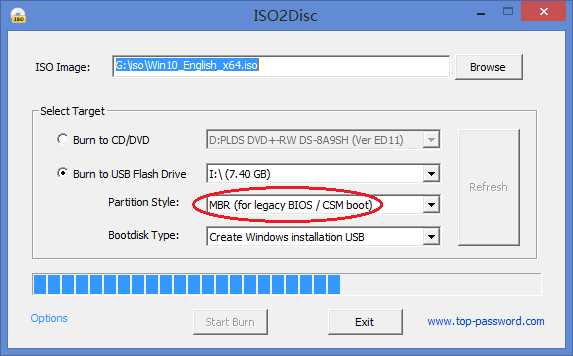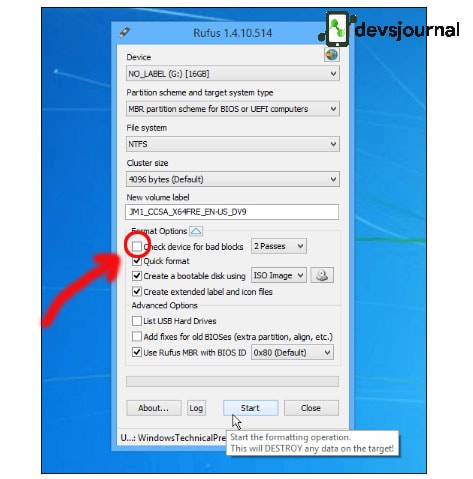

Select the Windows 10 ISO image file - 32-bit or 64-bit - whichever you downloaded.
Click on the CD/DVD drive icon to browse to the Windows 10 ISO image file. If your PC has a GPT partition scheme (GUID Partition Table), then pick the appropriate option from the combobox. Select the partition scheme for UEFI computers with MBR. Run the Rufus utility and pick your USB drive under the Device section. All data on this drive will be erased, so it is a good idea to backup everything from this USB drive before proceeding.  You need a USB drive with at least 4 GB available. Download the latest version of Rufus from HERE. Also, it is a portable app so it does not require itself to be installed. Rufus is free and works without any issues. It is a good idea to use the Rufus tool to prepare the bootable UEFI Windows 10 USB drive.
You need a USB drive with at least 4 GB available. Download the latest version of Rufus from HERE. Also, it is a portable app so it does not require itself to be installed. Rufus is free and works without any issues. It is a good idea to use the Rufus tool to prepare the bootable UEFI Windows 10 USB drive. Create windows 10 bootable usb stick how to#
In this article, we will see how to create a bootable UEFI USB drive containing Windows 10 Setup. If you need a UEFI bootable USB stick, the earlier-mentioned method will not work. This method is suitable for devices which boot using the legacy BIOS mode. Previously, I showed you how to install Windows 10 using a bootable USB stick.

RECOMMENDED: Click here to fix Windows issues and optimize system performance







 0 kommentar(er)
0 kommentar(er)
